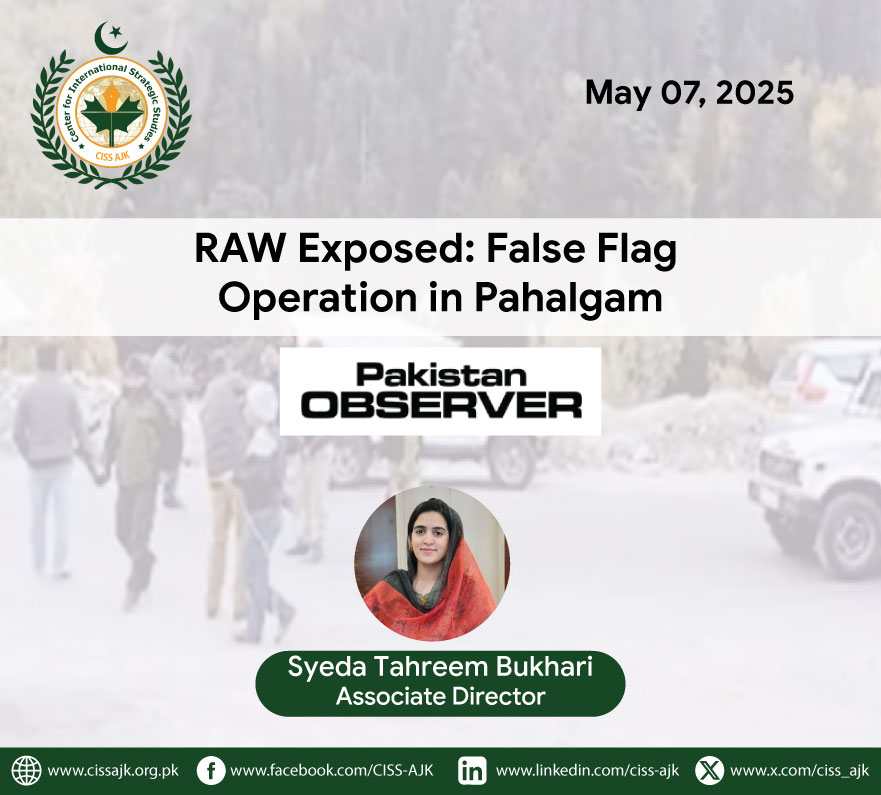THE leaked paper, “Psy Ops and Narrative Control,” on Telegram clearly describes the operational architecture of the Pahalgam false flag operation and confirms the long-standing claim that Indian intelligence services were actively involved.
In addition to being a unique piece of contemporary evidence, this document remains a known strategy of regional destabilization and narrative manipulation.
The leaked document stated that 36 hours after the incident, Indian media was supposed to spread an anti-Pakistan narrative; however, this timing was thrown off when Pakistan was blamed too soon, exposing inconsistencies in the intelligence approach.
The report included specific guidelines for swaying public opinion, such as portraying the attack as directed against India’s non-Muslim community and sending RAW agents in disguise as tourists to Anantnag.
A disinformation effort was to be supported by AI-generated witness accounts and blurred images on more than 200 social media profiles, purposefully omitting centralized hashtags to avoid discovery.
Crafting digital perception is not a novel approach.
The Chinar Corps controversy exposed by the Washington Post also highlights the use of fake social media profiles by the Indian army to portray the local Kashmiri resistance as extremism and state-sponsored terrorism.
Pahalgam incident was not only kinetic operation but also psychological one that aims to control narrative based on deceit.
It aimed to divert the world attention from Kashmir dispute towards a more general narrative of Islamic terrorism.
This tactic is noteworthy because it parallels the story of the 2001 Parliament attack in India, which was timed to coincide with post-9/11 global concerns and claimed that Pakistan was funding Islamic terrorism—similarly, the latest effort aimed to change the international discourse on extremism from the Kashmir dispute.
The deliberate attempt to capitalize on international anti-terrorism sentiment for diplomatic advantage is demonstrated by India’s Northern Command’s role in fabricating ISI proof.
The operation was strategically timed with U.S.Vice President JD Vance’s trip to India to secure international support for the counterterrorism agenda.
The Chattisinghpora massacre followed the same pattern, timed to coincide with the US President Bill Clinton’s visit.
The planners were not only ready for failure but also took precautions to manage the military perception in the area and shield themselves from outside scrutiny if the operation failed.
They also had a backup plan to persecute a similar operation in Shopian in IIOJK in case the Pahalgam episode was discovered or leaked.
Strict restrictions on Indian military movements close to the Line of Control (LoC) were also part of the strategy.
It aimed to prevent international attention or action, especially from China or the UN, who might intervene if military activity escalated.
The leaked document demonstrates how India’s dangerous combination of militarism, narrative manipulation and false pretexts threatens regional peace.
History demonstrates how easily unchecked deception can escalate into violence.
Therefore, the international community should demand accountability, defend the truth and strive to prevent South Asia from being driven to the verge of war by fabricated crises.
—The author is Associate Director at the Centre for International Strategic Studies, AJK (tahreembukhari1692@gmail.com)



